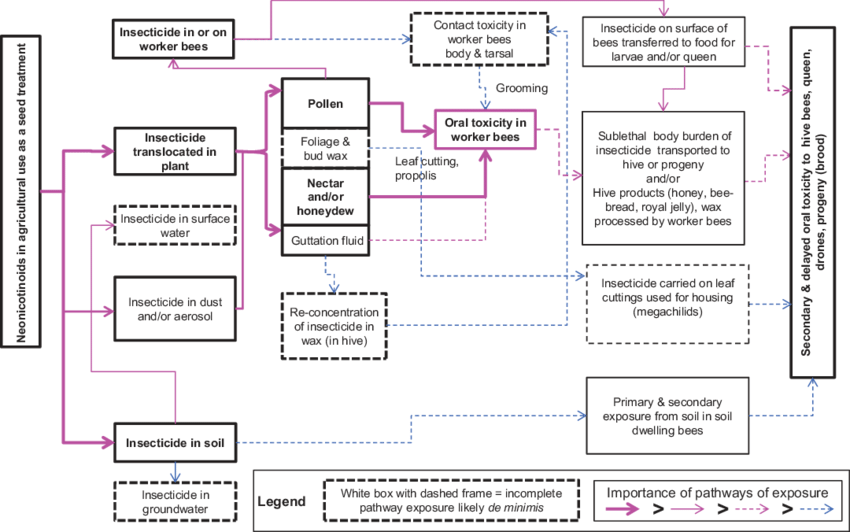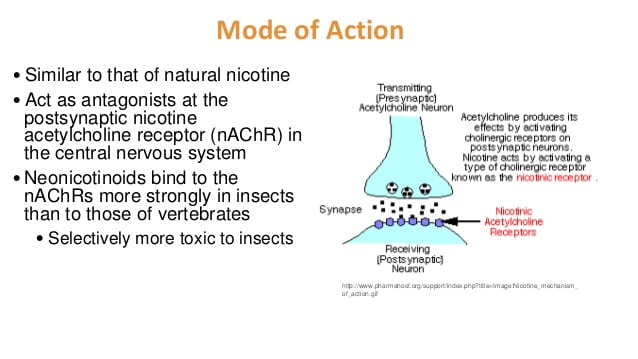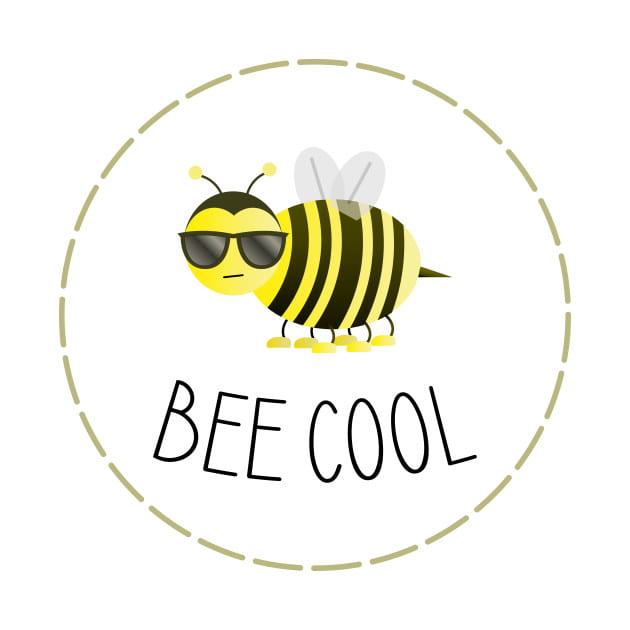So what’s the buzz about?
Graphic derived from: Brunning, Andy. “Neonicotinoid pesticides – the facts”. Compound Interest. 2018. <https://www.compoundchem.com/2015/04/14/neonicotinoids/>
Neonicotinoids were introduced relatively recently (1980s) have a variety of chemical structures, as they make up a broad group of pesticides. However, they have been linked to the fall of the bee population and other large environmental concerns. The article by Blacquiere, Smagghe, Gestel, and Mommaerts explains why this class of pesticides poses globally concerning issues, including factor such as “residue levels in plants” and “reported side-effects with special attention for sublethal effects”.
Did you know that Neonicotinoids literally translates to “new nicotine-like insecticides”?
 Shutterstock image from Mother Jones’s webpage here
Shutterstock image from Mother Jones’s webpage here
Neonicotinoids affect the central nervous system of insects. Some major groups within this class are:
Imidacloprid – used to control sucking reflex in insects
Acetamiprid – causes hyperactivity and muscle spasms
Clothianidin – systemic neurotoxin
Thiacloprid – used to control sucking and biting reflexes in insects
Thiamethoxam – paralytic effects
Read more at Gardening Know How: What Are Neonicotinoids Pesticides And How Do Neonicotinoids Work https://www.gardeningknowhow.com/plant-problems/pests/pesticides/what-are-neonicotinoids.htm
BIOTRANSFORMATION
In 2009, one of the first studies in biotranformation of neonicotinioids was published by Pandey, Dorrian, Russell, and Oakeshott, showing how this group of pesticides selects the species on which it reacts. Find the abstract below and check out the full article linked here
Abstract
We report the isolation of a Pseudomonas sp. which is able to transform imidacloprid and thiamethoxam under microaerophilic conditions in the presence of an alternate carbon source. This bacterium, Pseudomonas sp. 1G, was isolated from soil with a history of repeated exposure to imidacloprid. Both insecticides were transformed to nitrosoguanidine (NNO), desnitro (NH), and urea (O) metabolites and a transformation pathway is proposed. This is the first conclusive report of bacterial transformation of the ‘magic nitro’ group which is responsible for the insect selectivity of neonicotinoid insecticides.
TOXICOKINETICS
The good news: This class of insecticides is widely favored due to the low risk in humans and larger mammalian creatures. A search in PubMED revealed that there are 98 peer-reviewed articles focusing on toxicokinetics of neonicotinoids and only one article relating to humans on this subject.
What did the article reveal?
Inhalation of imidacloprid resulted in gastrointestinal and respiratory distress with the patient making a full recovery.
What do other articles say?
Overall, neonicotinoids “generally have low acute toxicity to mammals, birds, and fish” (Tomizawa & Casida, 2005) and “studies reported low rates of adverse health effects from acute neonic exposure” (Cimino, Boyles, Thayer, and Perry, 2017). For a more visual representation on neonictinoids toxicity in insects:
Image found here
Graphic from here
- Drowsiness
- Dizziness
- Vomiting
- Fever
-Accidental inhalation of imidacloprid
- Sweating
- Aggitation
- Disorientation
Human health issues studied for acetamiprid as depicted by the below graphic from:
TREATMENTS
There are no antidotes for neonicotinoid poisoning. Current treatments include
- supportive care
- symptomatic treatments (ie medications given for nausea)
- washing exposed area (if dermal contact)
BIOMARKERS
There is a significant lack of biomarkers in assessing neonicotinoid toxicity in humans. This group of insecticides has a short half-life, suggesting that the best way to measure intake would be with urine samples.
For more information on this subject, see table 3 of the article “Biological Monitoring of Human Exposure to Neonicotinoids Using Urine Samples, and Neonicotinoid Excretion Kinetics” (Harada, et al 2016).
BEE AWARE
While neonicotinoids may not pose a large direct threat to humans, they are one of the leading causes of the honeybee deaths. Check out this link to find out why bees are important! https://www.travelfordifference.com/bee-awareness-month-save-the-bees/
Image from





Welcome to U.OSU.EDU! Comments are automatically turned on for all posts. Visit the following link to learn how to turn comments on/off: http://odee.osu.edu/resourcecenter/uosu/225